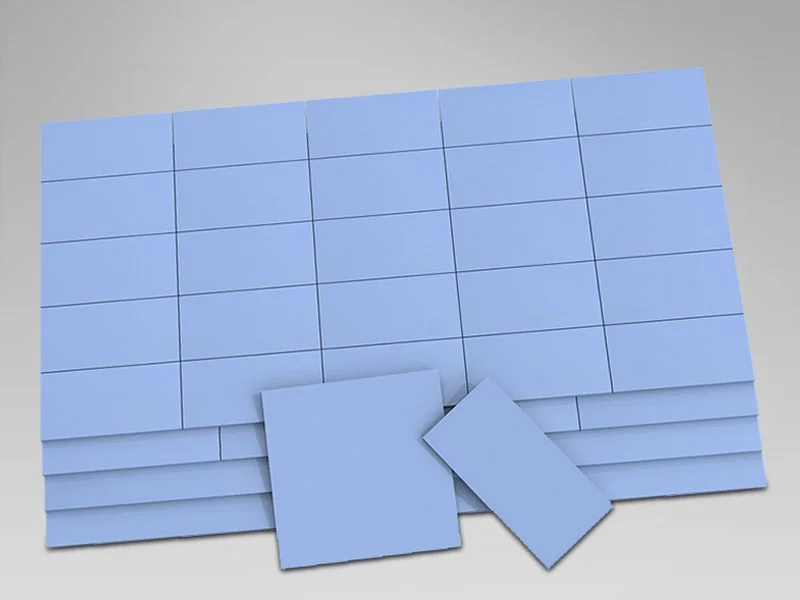Thermally conductive silicone pads, also known as thermal interface pads, are an essential component in electronic devices that generate heat. These pads serve as a medium to transfer heat away from the heat source, such as a central processing unit (CPU), and into the heat sink or other cooling system. The use of thermally conductive silicone pads has become increasingly common in recent years, as they offer an effective and convenient way to manage heat in electronic devices.
Cosa sono i cuscinetti in silicone termicamente conduttivi?
Thermally conductive silicone pads are a type of interface material that is designed to improve heat dissipation between electronic components. They are typically made from a mixture of silicone and ceramic materials that have high thermal conductivity, low thermal impedance, and excellent compressibility. The silicone base of the pad allows it to conform to the shape of the heat source and the heat sink, providing excellent thermal contact and transfer between the two surfaces.
Thermally conductive silicone pads come in a variety of thicknesses, densities, and thermal conductivities to suit different applications. Some pads are also available with a pressure-sensitive adhesive (PSA) backing, which makes them easy to apply and remove. The PSA backing ensures that the pad remains in place even under vibration and other stresses.

Vantaggi dei cuscinetti in silicone termicamente conduttivi
There are several advantages of using thermally conductive silicone pads in electronic devices. Here are some of the key benefits:
Improved Thermal Performance: Thermally conductive silicone pads provide an efficient and reliable way to transfer heat away from heat-generating components. This helps to reduce the overall temperature of the device, which in turn can improve its performance and reliability.
Easy to Install: Silicone pads are easy to install and require minimal preparation. They can be easily cut to size, and the PSA backing makes them simple to apply.
Cost-Effective: Thermally conductive silicone pads are cost-effective and offer a more affordable option than other thermal interface materials like thermal grease or thermal paste.
Reliable: Unlike other interface materials, such as thermal paste or grease, thermally conductive silicone pads do not dry out or harden over time. They also offer excellent stability and can withstand high temperatures and extreme conditions.
Applications of Thermally Conductive Silicone Pads
Thermally conductive silicone pads are used in a wide range of electronic devices that generate heat, including:
Computers and laptops: In computers and laptops, thermally conductive silicone pads are used to transfer heat away from the CPU and other high-power components.
LED lighting: In LED lighting systems, thermally conductive silicone pads help to transfer heat away from the LED chip, which can increase the lifespan of the lighting system.
Automotive electronics: In automotive electronics, thermally conductive silicone pads are used to manage heat in electronic components like power modules and inverters.
Industrial equipment: In industrial equipment, thermally conductive silicone pads help to manage heat in motors, power supplies, and other components that generate heat.
Conclusione
Thermally conductive silicone pads are an essential component in managing heat in electronic devices. They offer several advantages, including improved thermal performance, ease of installation, cost-effectiveness, and reliability. As electronic devices continue to become more powerful and compact, the use of thermally conductive silicone pads is likely to become even more widespread.
